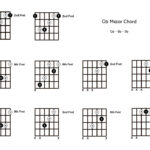Strymon Guitar Pedals stand as titans in the realm of boutique effects, revered for their exceptional sound quality, robust construction, and innovative design. These pedals, proudly made in America, are more than just stompboxes; they are sophisticated sonic tools that empower guitarists to sculpt breathtaking soundscapes.
The Genesis of Strymon: From Damage Control to Industry Leader
The Strymon story began in 2004 under the name Damage Control. Initially, they carved a niche with a distinctive line of tube-driven pedals, capturing the attention of tone-conscious players. The pivotal shift to the Strymon moniker in 2009 marked a new era, as they transitioned to developing cutting-edge digital pedals. This evolution proved transformative. Strymon rapidly ascended to prominence, earning widespread acclaim and numerous awards. Today, Strymon pedals are not merely sought after; they are coveted by guitarists worldwide, representing a pinnacle of pedal design and sonic artistry. Their impact is so profound that it’s conceivable Strymon pedals will be discussed alongside legendary gear like the Roland Space Echo, Fender Stratocaster, and Gibson Les Paul in future annals of music history.
Navigating the Expansive Strymon Pedal Universe
The Strymon product catalog is impressively diverse, encompassing a wide spectrum of effects, even venturing into overdrive and distortion territories. However, Strymon’s core strength and celebrated expertise lie in their delay, reverb, and modulation pedals. At the forefront of their offerings are powerful digital pedals engineered to provide granular control over a vast array of parameters. This deep level of adjustability allows musicians to meticulously craft virtually any sound imaginable, pushing the boundaries of sonic exploration.
While some Strymon pedals are known for their larger footprint – a necessary aspect to house their complex circuitry and extensive controls – their sonic capabilities justify the size. The ability to access such a diverse palette of high-fidelity tones within a single pedal is a significant advantage for discerning musicians. Recognizing the needs of players seeking more compact solutions, Strymon also offers smaller, dual footswitch pedals tailored for specific applications. Examples include the Riverside cascading overdrive, delivering rich and dynamic drive tones, and the Deco tape saturation & doubletracker, meticulously emulating the sought-after sounds of vintage tape machines. These more streamlined pedals provide the signature Strymon sound in a format that integrates seamlessly into traditional pedalboard setups and often come at a slightly more accessible price point.
It is within the domains of delay and reverb that Strymon has truly etched its name into modern guitar effects history. Pedals like the El Capistan dTape Echo, an exceptional emulation of tape delay (not an actual tape delay mechanism), and the Timeline Multidimensional Delay, which spans the spectrum from classic slapback to expansive ambient dual delays, showcase their mastery. Furthermore, Strymon’s reverb pedals have arguably become synonymous with the ambient guitar movement that has gained immense popularity among contemporary players. The lush, ethereal, and deeply immersive reverb textures offered by Strymon pedals have become a defining characteristic of modern ambient and atmospheric guitar sounds.

